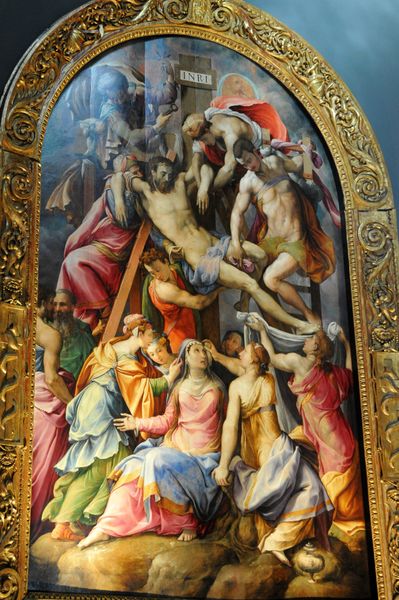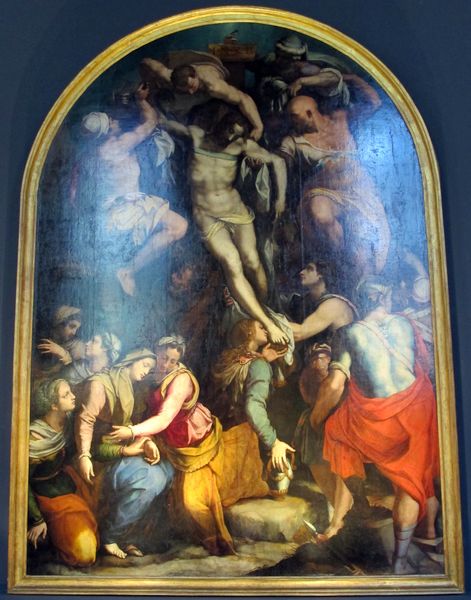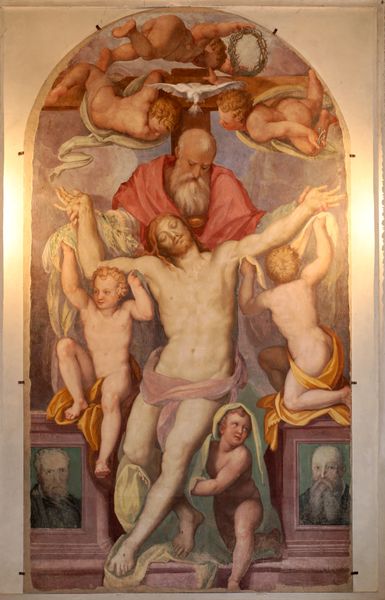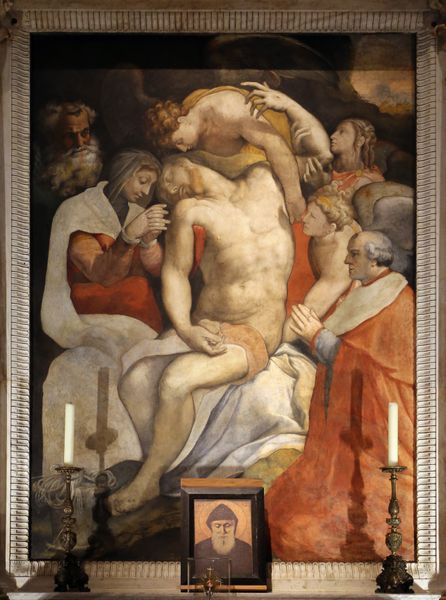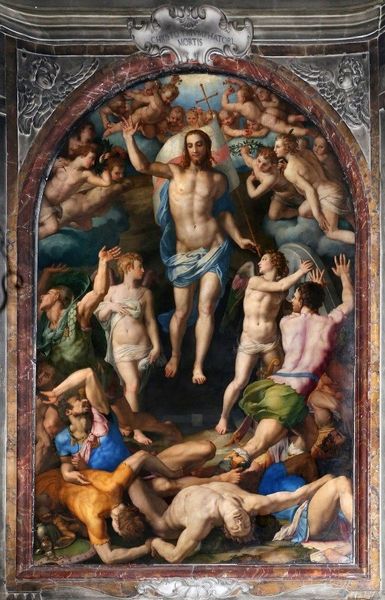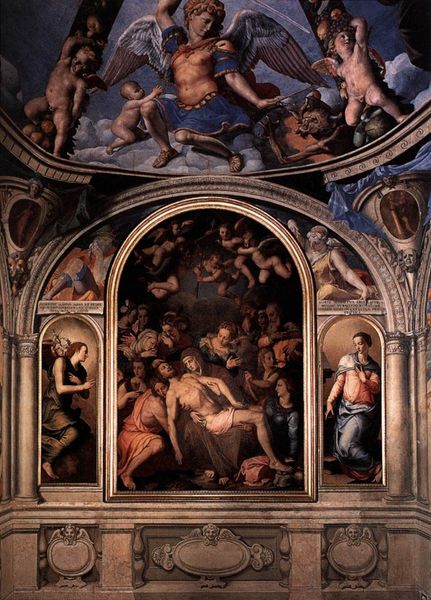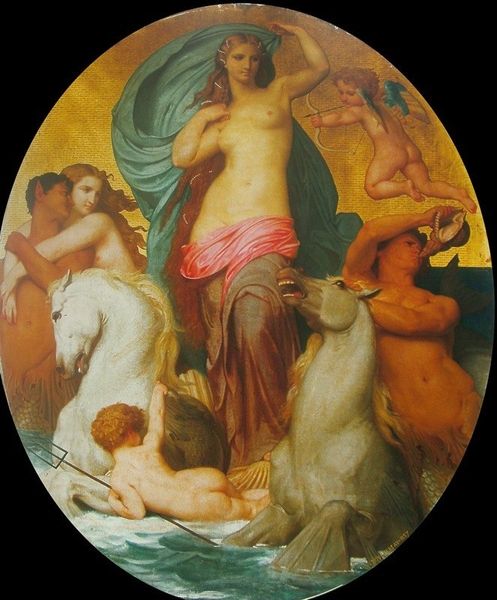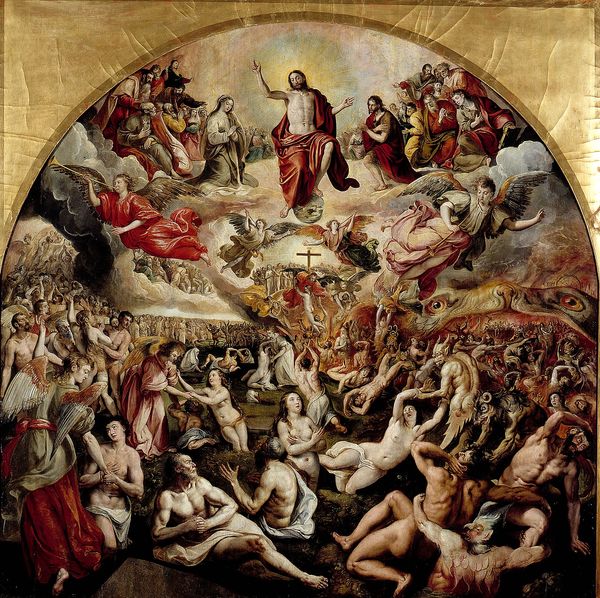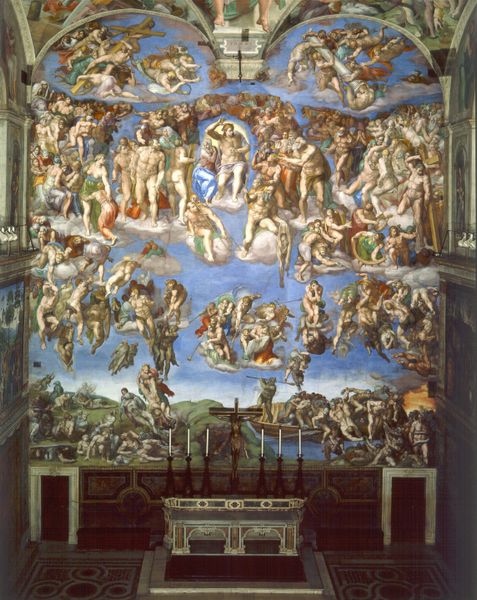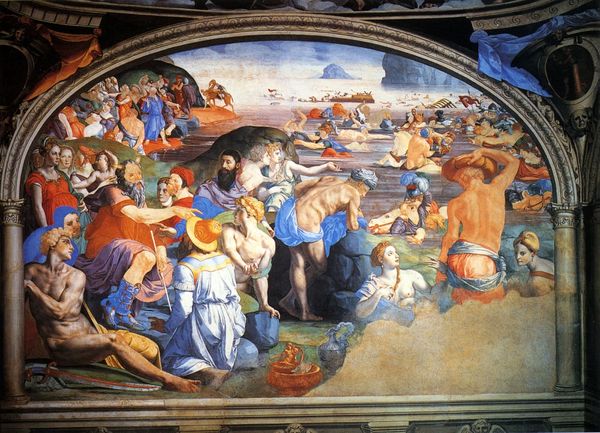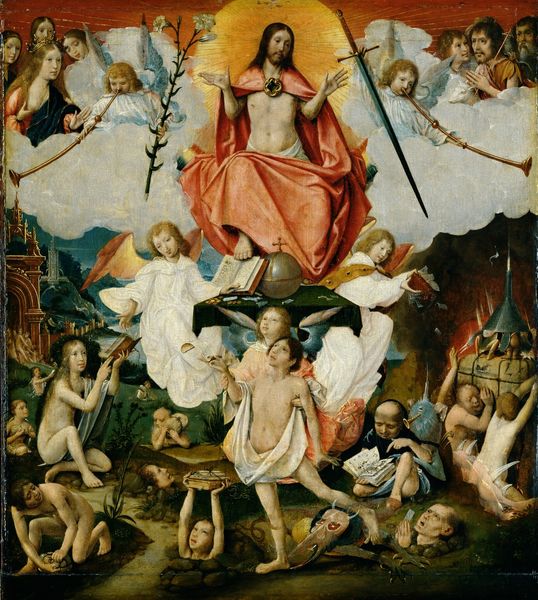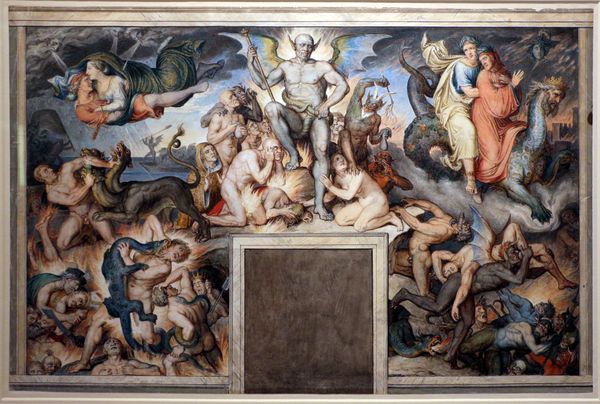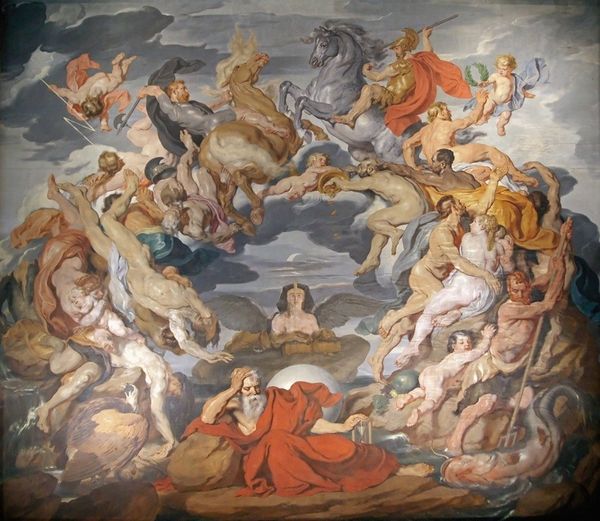
painting, fresco
#
portrait
#
high-renaissance
#
narrative-art
#
painting
#
figuration
#
fresco
#
jesus-christ
#
christianity
#
history-painting
#
italian-renaissance
#
brown colour palette
#
christ
Copyright: Public domain
Curator: Well, I am instantly struck by the figures straining, reaching towards the light. There’s such dynamism, but also this deep, aching vulnerability. What do you make of it at first glance? Editor: You've keyed into a really emotional perspective of what's going on here. We're looking at Agnolo Bronzino’s “Christ in Limbo,” painted around 1552, and as you said, it's teeming with figures. The theme delves into Christ’s descent into Limbo to liberate righteous souls. It's a scene loaded with symbolic meaning about salvation. Curator: Salvation, yes, but also imprisonment, isn't it? Limbo itself speaks of being in between places, neither heaven nor hell, a space of waiting. And the way Bronzino has clustered those figures… almost claustrophobic, actually. Like they're desperate to break free. The visual tension feels very potent. Editor: Absolutely. Limbo, in medieval theology, held those denied entry to Heaven but not deserving of Hell – like those who died before Christ. But visually, Bronzino amplifies the yearning, doesn’t he? Note the stark contrasts, almost theatrical. The palette leans into earth tones to really heighten Christ's luminescent presence. Think about what that white flag, his beacon, means in that context. It creates this immediate reading for the viewer, where our eye gravitates from the shadows directly towards it and Christ himself. Curator: That contrast pulls so much weight, not only Christ's divinity, but that visual dichotomy. He is literally pulling them out of the shadows, in what visually feels like the last tug of hope to be seen and believed. It also makes you consider, doesn’t it, the notion of a historical versus an emotional truth, the iconography here as cultural storytelling and emotional impact. Editor: A superb distinction. The composition isn’t just representational; it actively participates in crafting belief. And if we return to considering what hope looks like, it gives that experience to us. These symbols carry the weight of collective hopes. What strikes me most about this painting is that, whilst the story might be traditional, its lasting impact depends on something other than mere fidelity. It triggers an imaginative, spiritual leap in the viewer. Curator: Yes, that spiritual leap, that echo through time, still so vital. This really is a deeply resonant work.
Comments
No comments
Be the first to comment and join the conversation on the ultimate creative platform.
